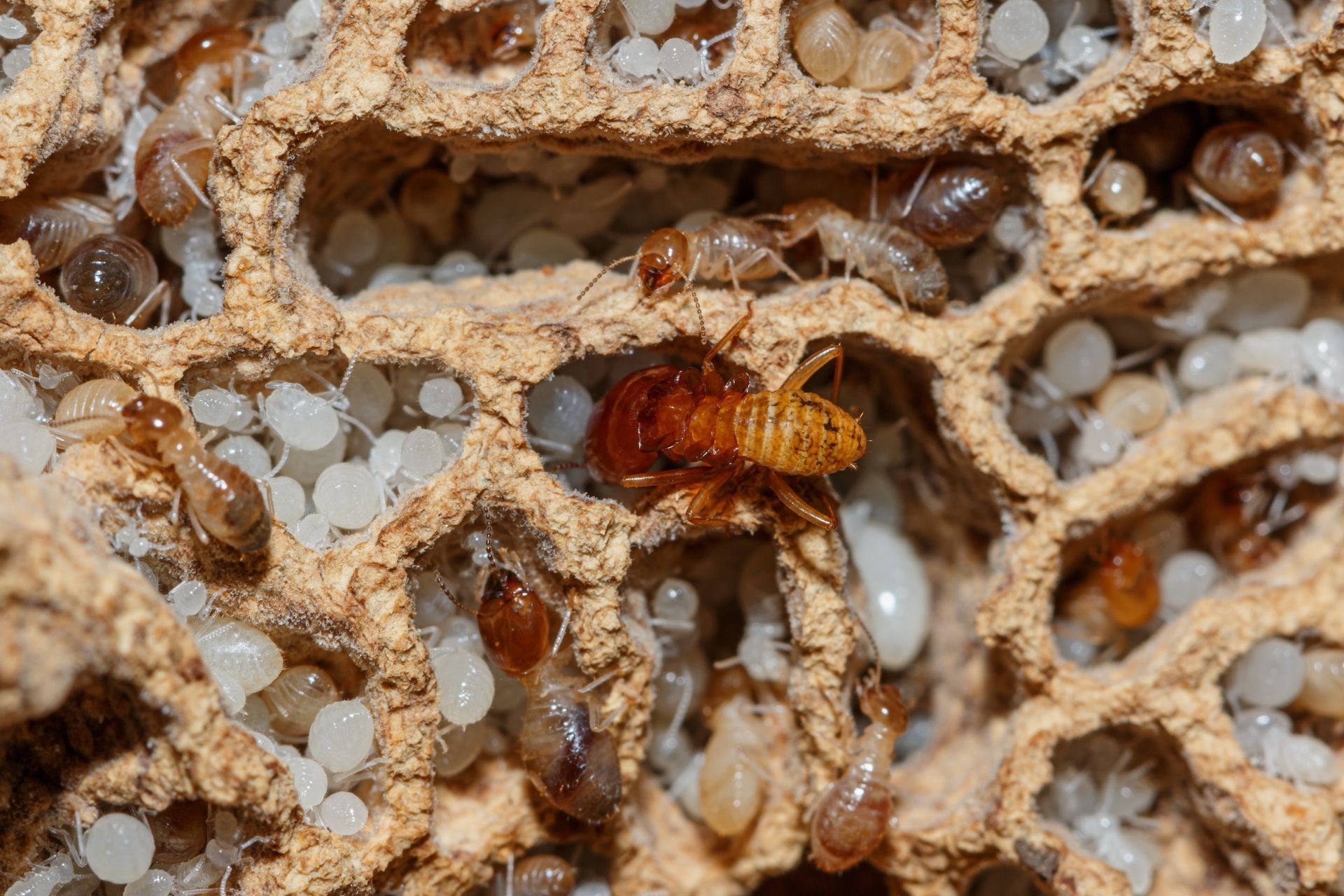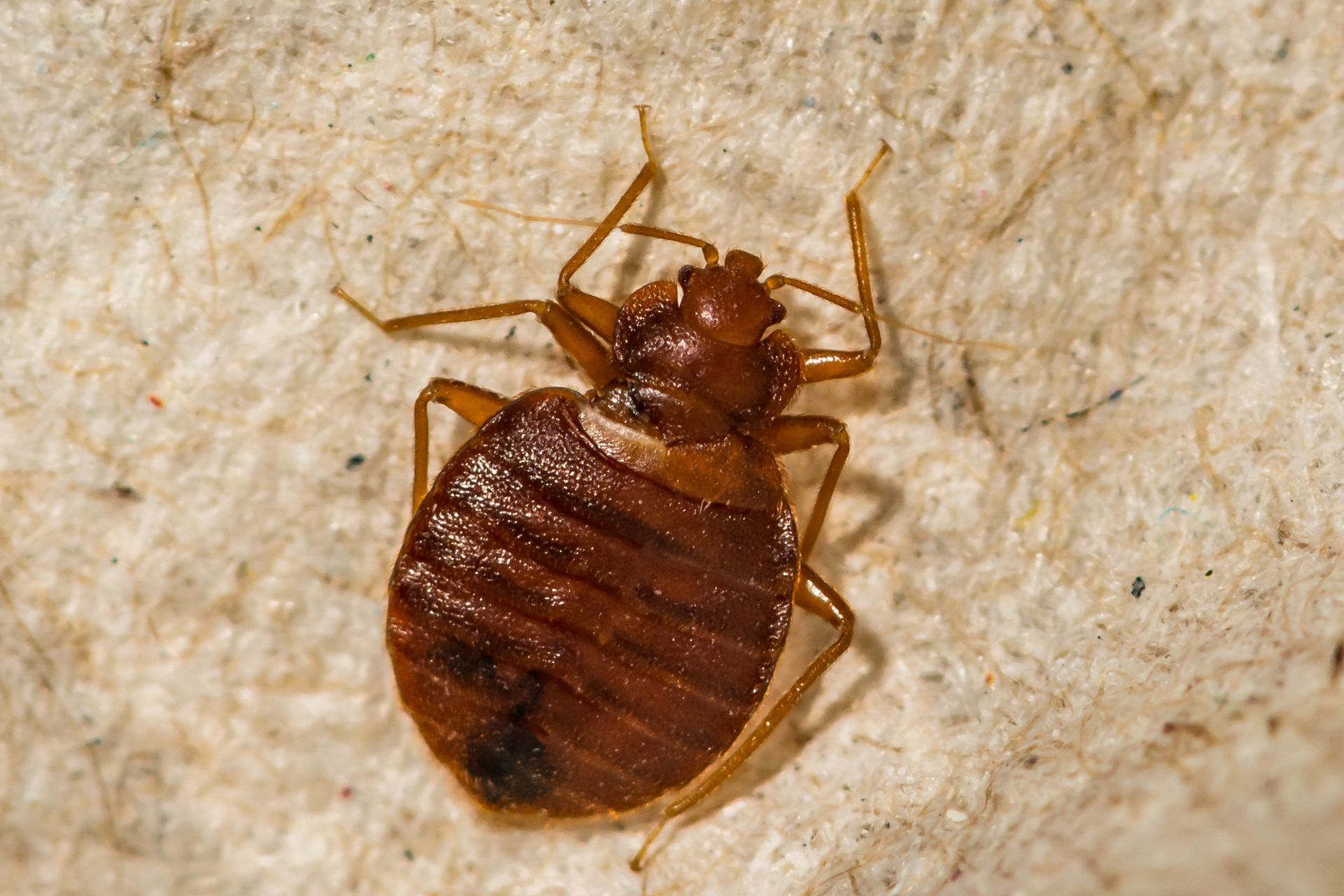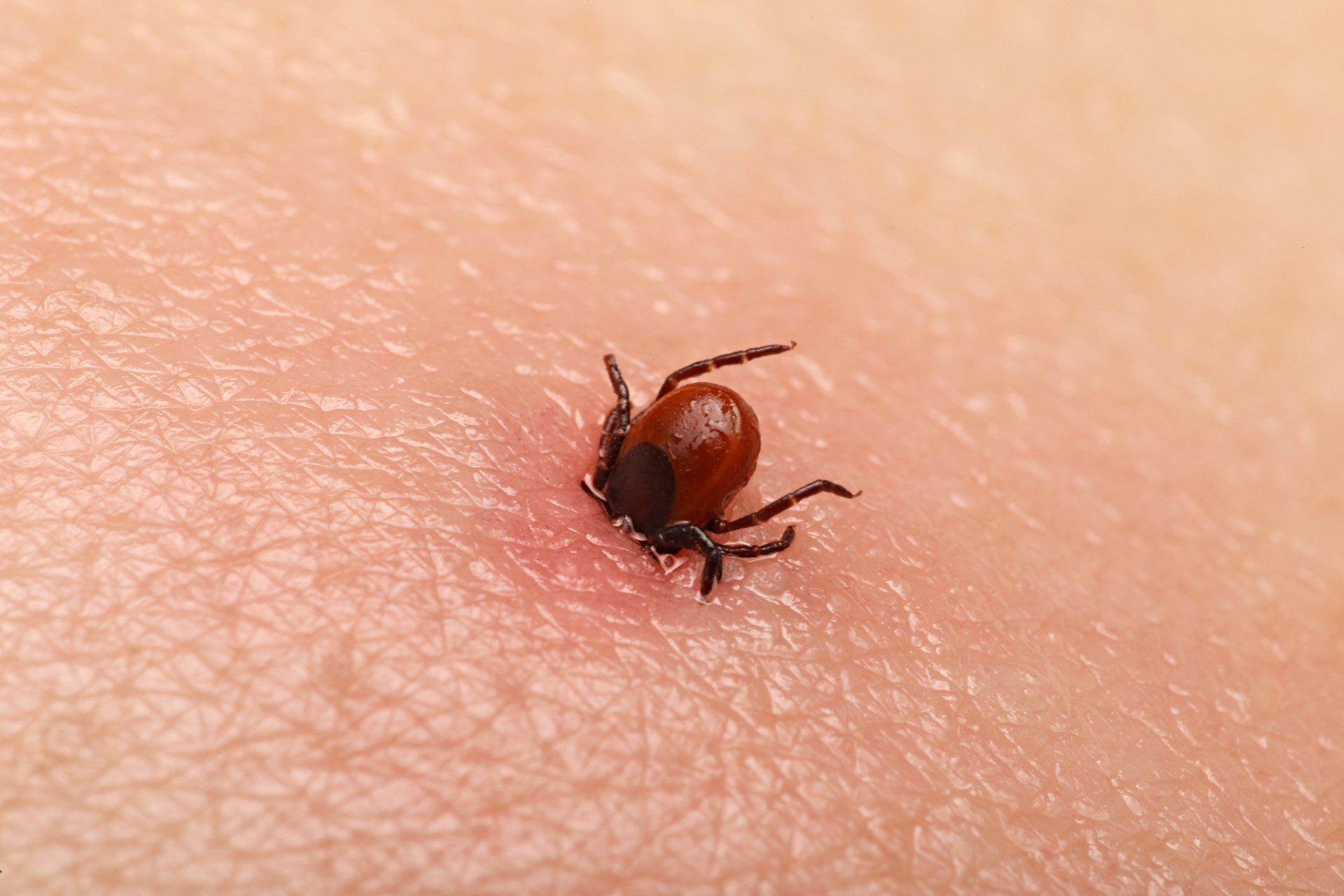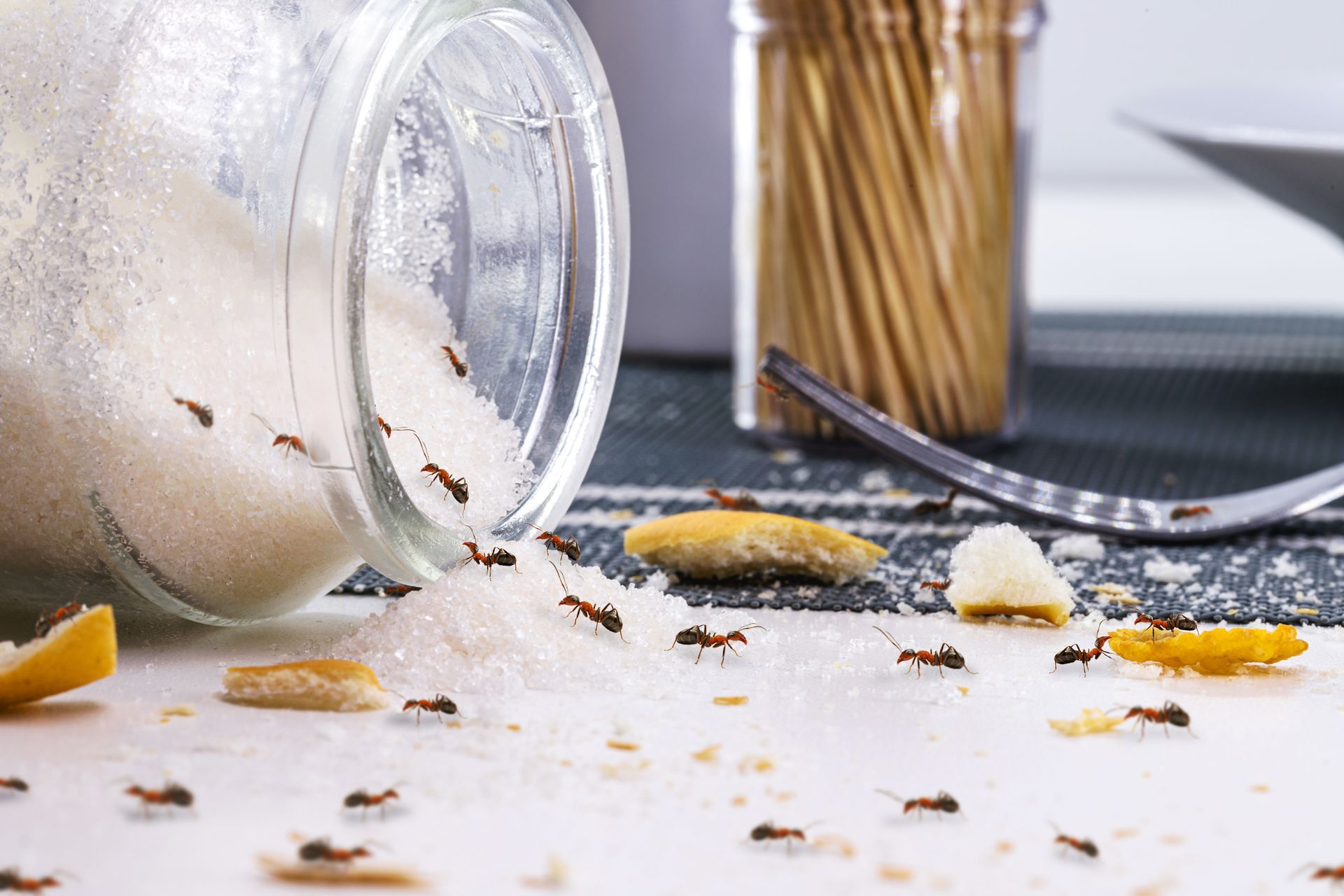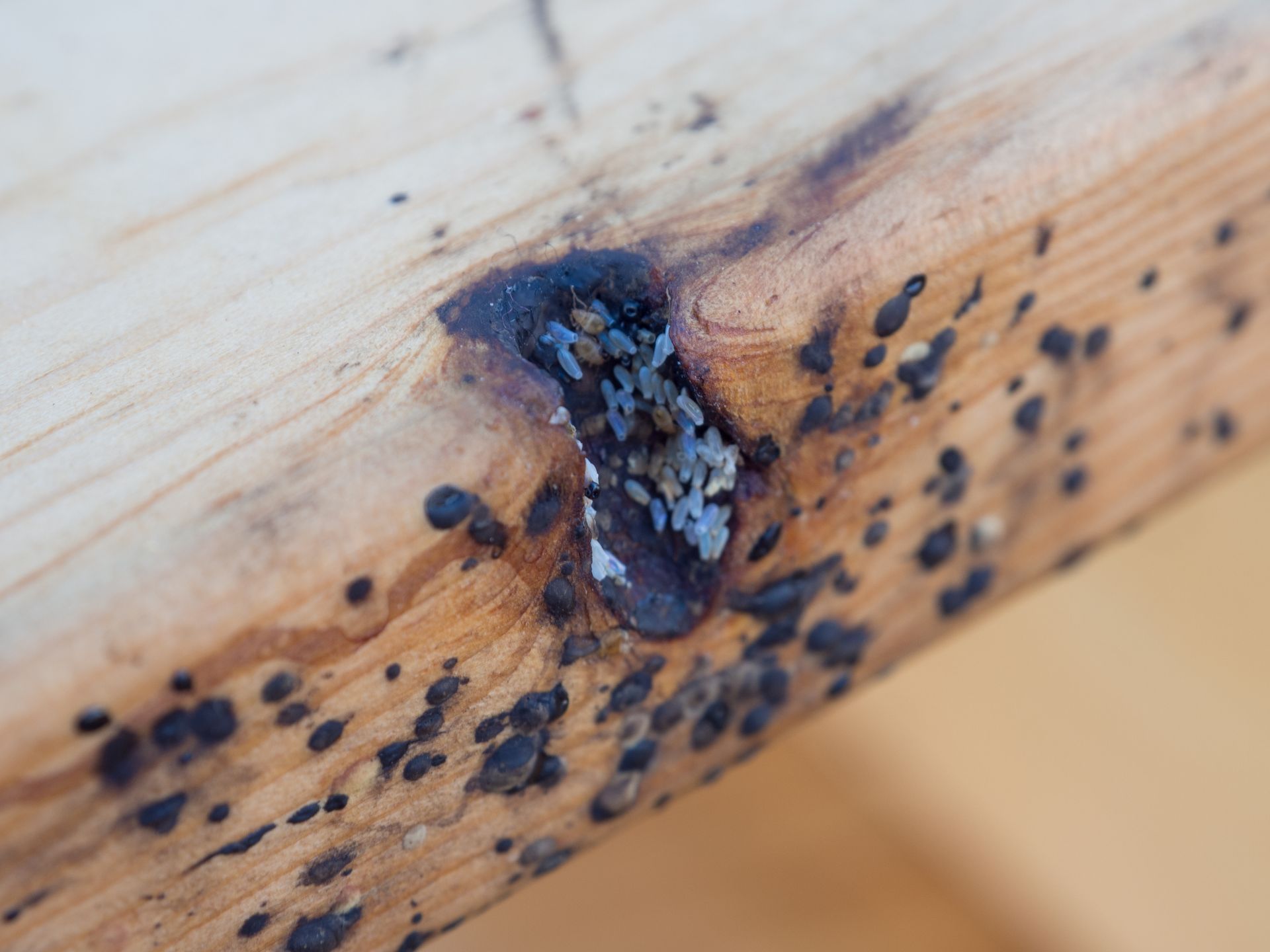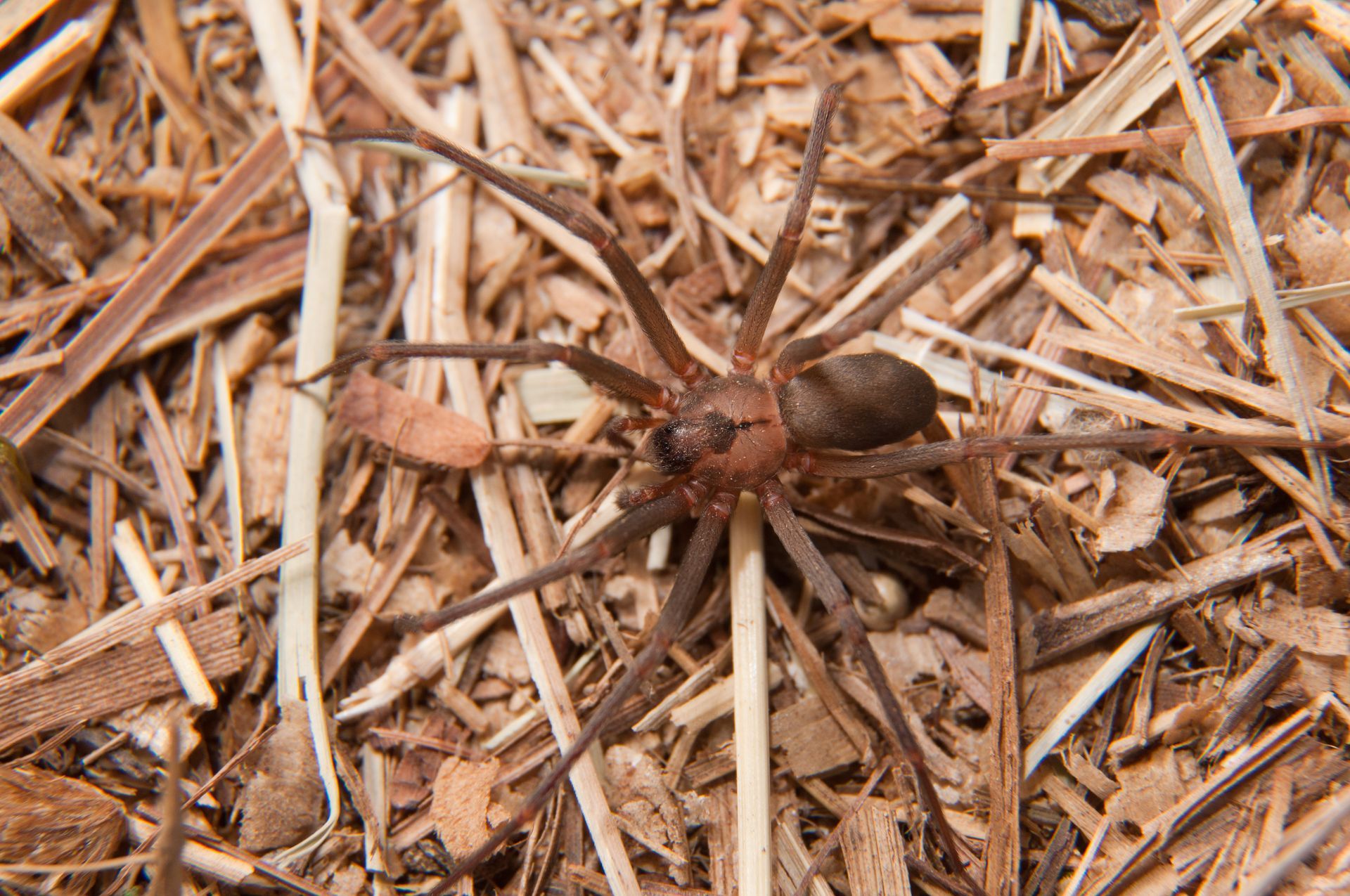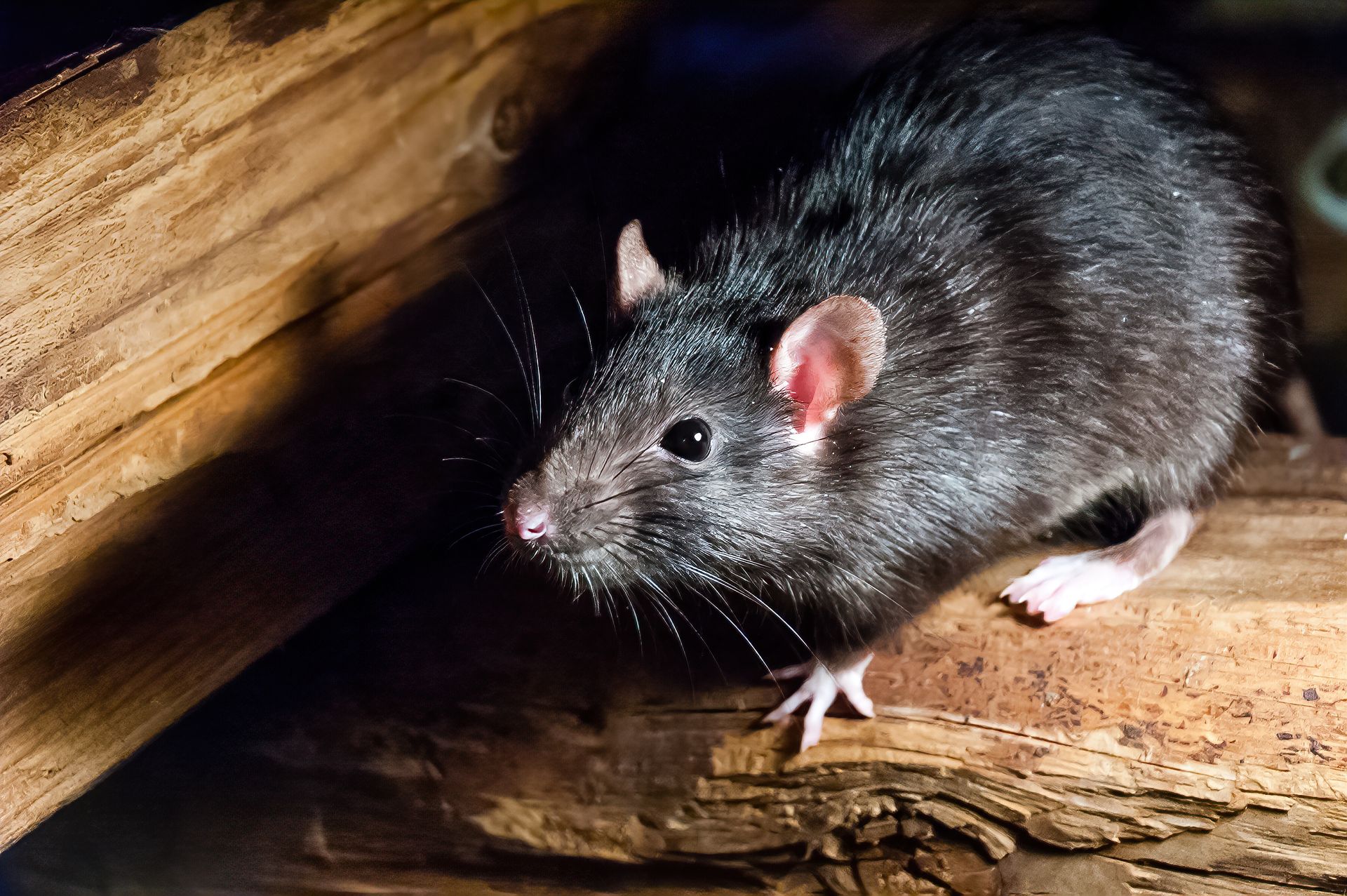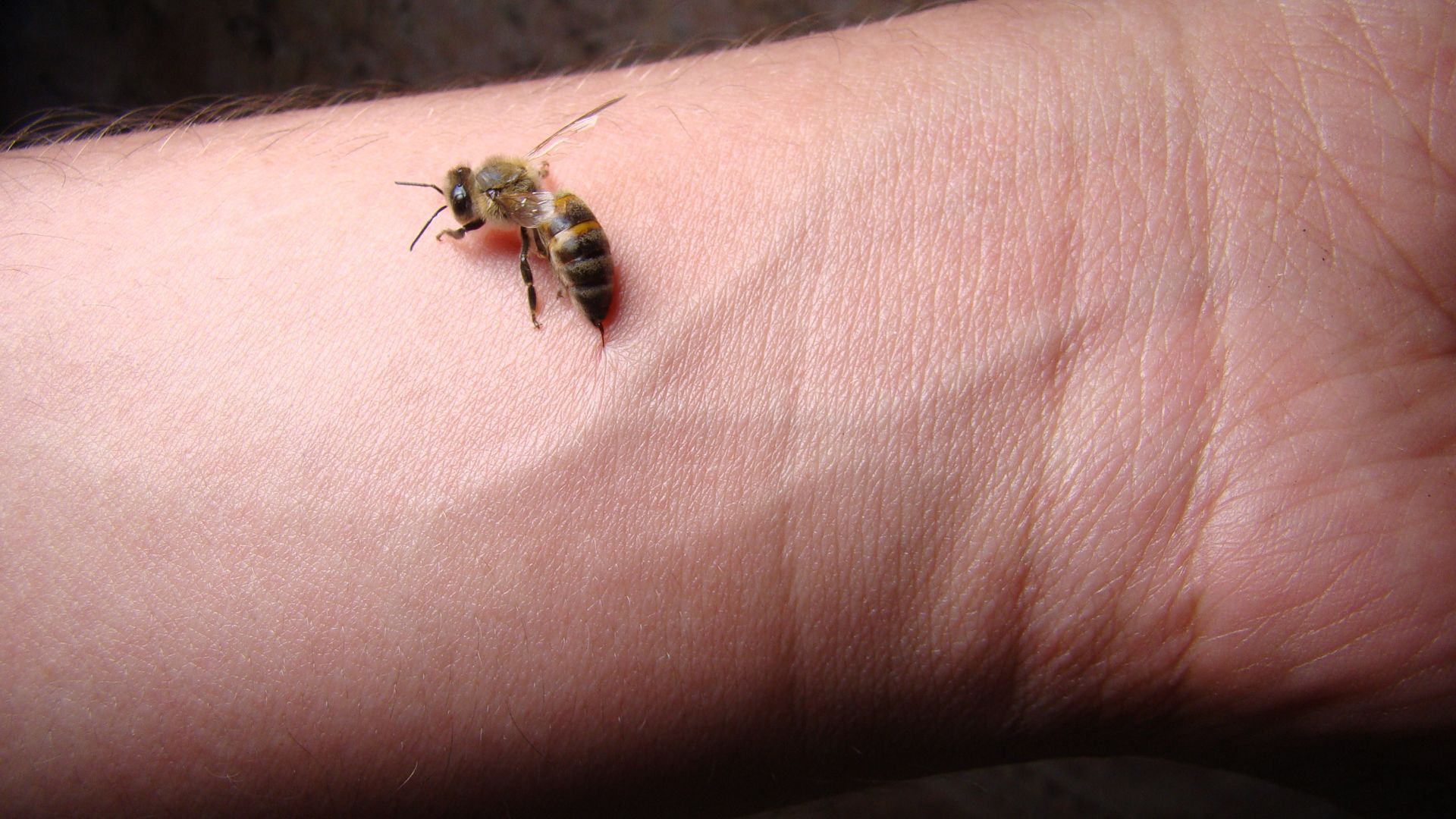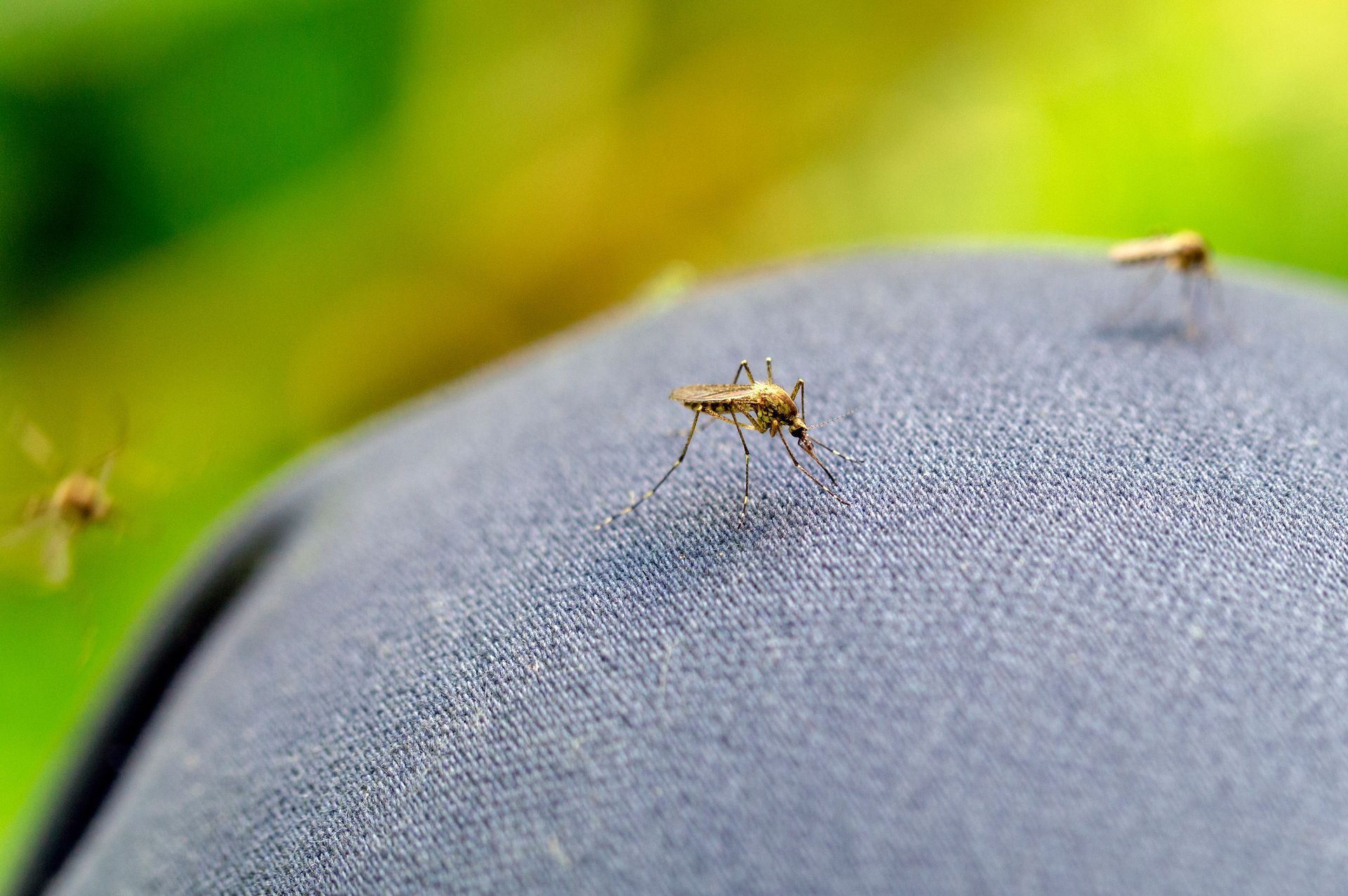Signs Of Termites
Common Signs of Termite Activity in Your Home

Termite activity won’t be visible for a while because they eat the interior of wooden structures without leaving behind too much evidence. This means that a significant amount of damage can be done before termites are even discovered. The best way to prevent extensive damage is to identify a termite problem early and treat the infestation as soon as possible. This is why being able to recognize signs of termite activity is critical to early termite detection.
Signs of Termites
The following are all common termite signs or indicators:
- Visible termites or similar bugs like “white ants” or “flying ants”
- Visible damage to wooden structures including termite galleries, chambers, and what appears to be wood rot
- Wood that buckles or splinters under pressure
- Wood that sounds empty or hollow inside and can be pierced with a sharp tool during inspection
- Buckling floors or ceilings
- Paint peeling or bubbling as if it were water damaged
- “Kick out” holes that have piles of termite droppings building up below them
- Loose floor tiles or squeaky floorboards
- Windows and doors that stick
- Flying termite swarmers or their discarded wings
- Mud tubes
- Late night “clicking” sounds coming from inside the walls
Signs of Termite Swarmers
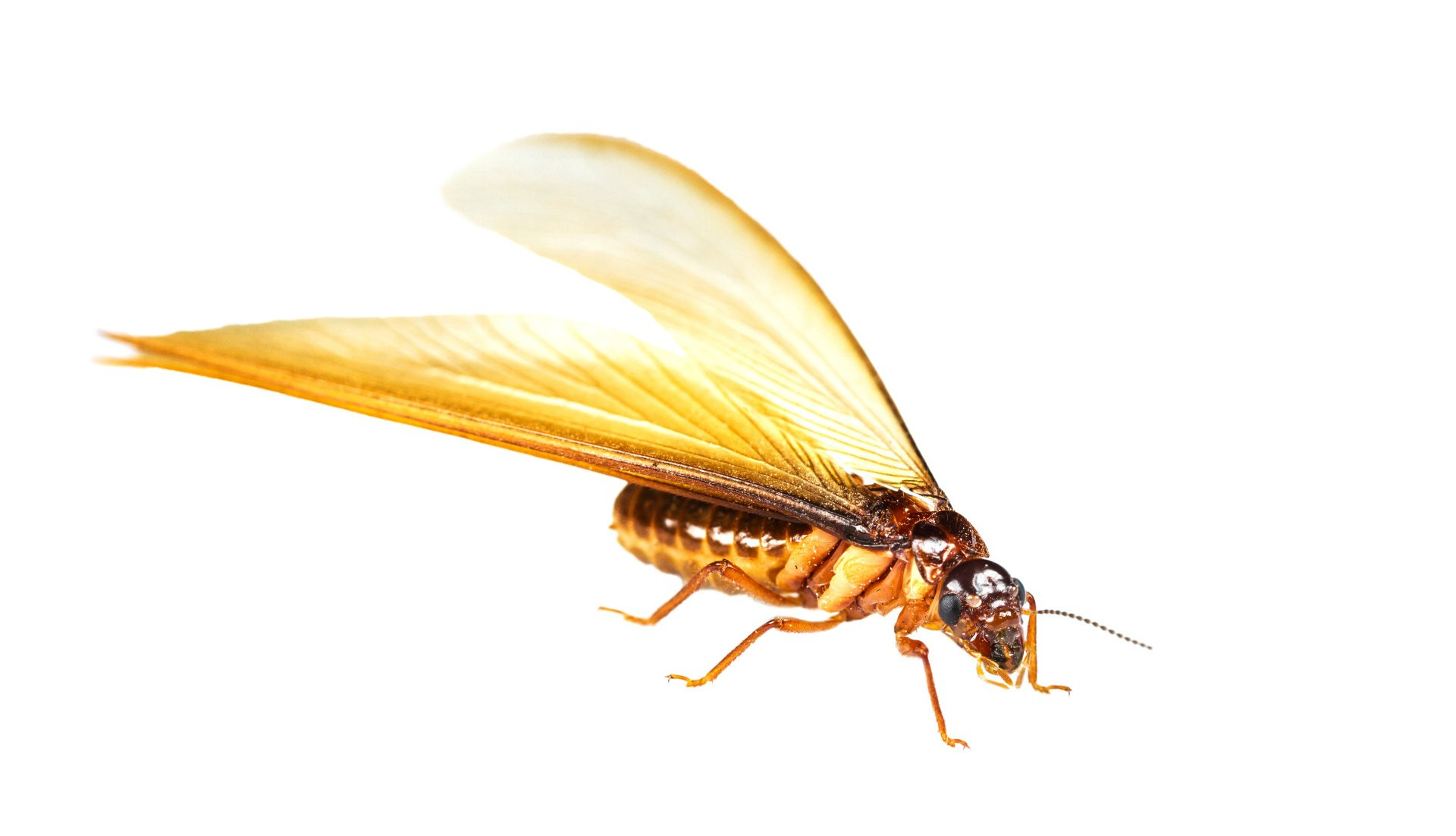
The first potential sign that your property is potentially under threat from termites is seeing an actual termite swarm. This cloud of flying termites are the fertile reproducing termites that have been sent out from another colony to find and establish a new or satellite colony. Seeing this sign of termites outside could mean that damages have not been inflicted yet because the swarm hasn’t settled on a new location yet. It is important that professional help is brought in immediately to help prevent a new colony from emerging. Swarms generally occurs in the spring and fall when a colony has reached capacity. That said, swarmer development also depends on the needs of a termite colony and other conditions like weather and available resources.
However, if swarmers take flight, somewhere in the mix is a brand-new queen and king termite who are ready to find a new colony location and start producing eggs. If the swarm identifies your property as a good place to establish a colony, it is only a matter of time before they decide to infest your home.
Discarded Swarmer Wings
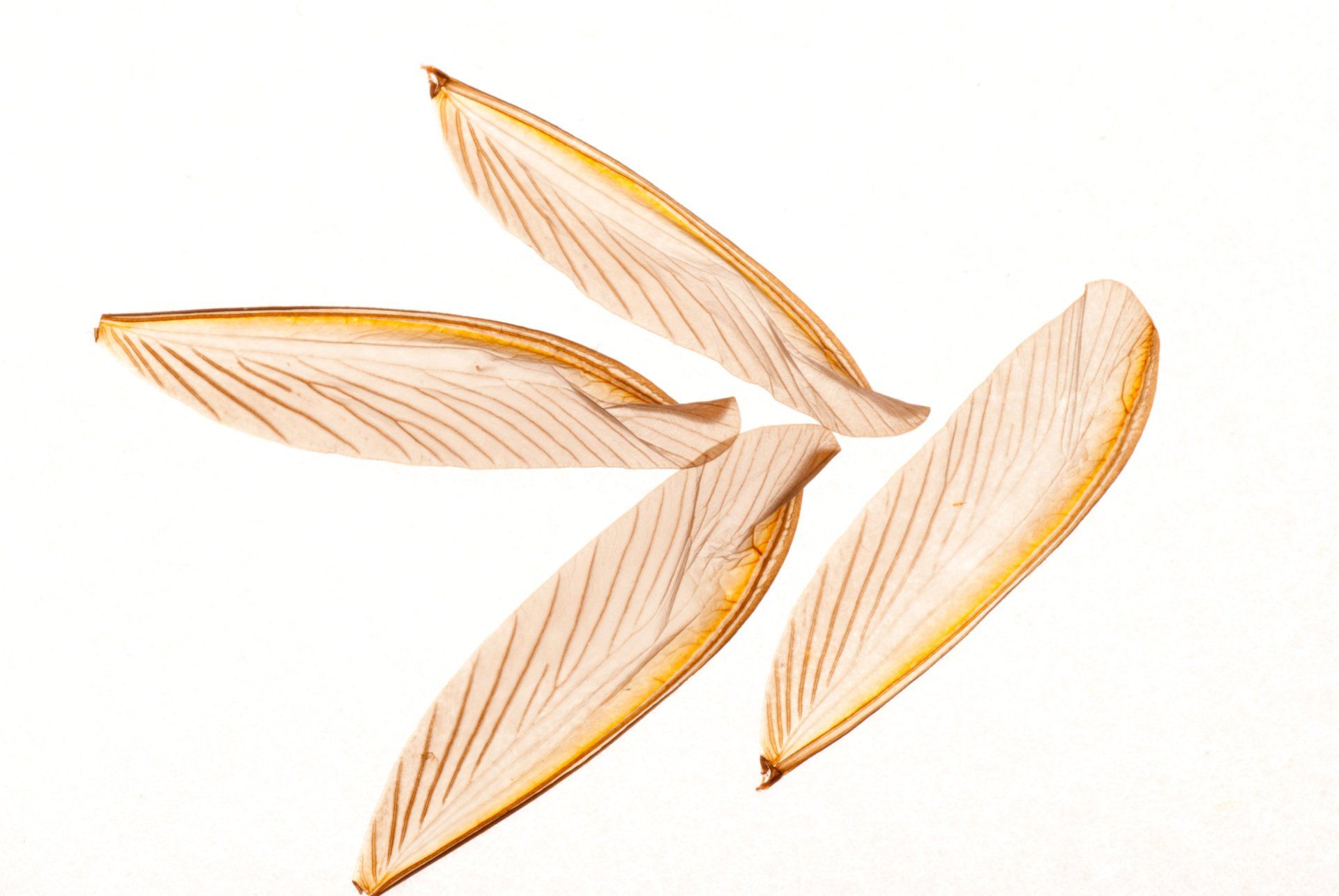
Even if you miss the termite swarm activity, finding piles of discarded wings is an even worse indicator that you are dealing with an infestation. Once a swarm of flying termites identifies a new home, they will chew or rub their wings off and take the role of workers until they can establish a chamber near by for the queen to start laying eggs. Once this is done, a new colony has been established. While finding these wings can be a sure-fire sign that there is an infestation close by, it is also the best early sign of detection possible. Normally the wind will take these wings and disperse them so actually finding discarded wings indicate that the termite colony is new, close by, and relatively small.
Signs of Termites in Trees
Sometimes swarms will occupy a tree on your property before finding a way to reach your home. Ensuring that trees are monitored and inspected regularly is critical to preventing termites infesting trees. Termites’ natural role in the ecosystem is to find detritus like dead and dying trees and to break them down into nutrition to be returned to the soil. If there are dead trees around, those pose a significant threat and should be removed otherwise they provide a perfect home for a swarm of termites to occupy.
Signs of Drywood Termites
Drywood termites are common in warm climates where they are most prolific. Colder temperatures slow their reproduction rate so drywood termites in the south thrive. These termites live inside of the wooden structures they consume leaving runways, galleries, and chambers. They will sometime break the exterior of their wooden environments to allow the termite waste to be release or sometimes on accident. Termite “kick-out” holes are the ones used by worker termites to push the termite waste out of the termite galleries to prevent obstruction. The other holes are created when termites accidently breach the surface of the wooden structure while expanding the colony. These holes are promptly closed with a cellulose and saliva mix that can be easily brushed off.
Drywood Termite Droppings
Drywood termite droppings are known as “frass” and can be found in little piles. It is so small, that at a surface glance, it looks like sawdust or coffee grinds. However, under magnification, it appears to be short ovals with rounded tips and 6 sides.
Signs of Subterranean Termites
Subterranean termites and Formosan termites are found all over the United States. They colonize the ground under your home and build pathways to the wooden structures of your home. These bugs are much more concerning because their optimal reproduction rate can introduce enough termites to take down a home in a few years.
Mud Tubes
Subterranean termites will use a mix of their liquid waste, saliva, and dirt to create mud tubes from the opening of their colony to the wooden substructures of your home. These tubes will be found under your home, patio, crawlspaces, and inside cracks in a home’s foundation.
Signs of Wood Damage
Seeing signs of wood damage is an indicator of termites that doesn’t appear until later which can be extremely concerning. By the time wood starts to deform or buckle, there is usually a significant amount of damage done.
Blistering or Buckling Wood Floors
Termite damages from below are generally the result of subterranean termites. The cavities they create can introduce moisture that causes damage similar to water damage. This can cause the wood to warp and bow outwards or cave in under pressure. It is important to have any changes in the flooring checked immediately because termites that have reached the substructures of the floor also have access to critical load bearing wooden structures.
Hollow or Damaged Wood
Termite damage occurs mostly under the surface of the wood so a hollow sound or wood crumbling during inspection usually indicates the presence of termites. With enough time termites will completely hollow out piece of wood, leaving a brittle shell of walls between termite runways and chambers. Removing the core of the word intact leaves structures open to buckling under pressure which is not good when considering the impacts of weak floors or ceilings.
Sagging or Bubbling Paint
Termites will sometimes breach the wood surface without penetrating the layer of paint that covers it. In these instances, air pockets are introduced below the paint, causing it to bubble and sag. The air being fed through the termite tunnels inside of the wood will eventually be exhausted by one of these openings.
Tunnels in Wood
The most common signs of termites in wood are the termite tunnels that get carved out by worker termites as they expand the colony. These “galleries” make up a winding maze like set of tunnels that connect to the royal chamber and the eggs so workers can continue to deliver food to the queen termite. These tunnels are rarely seen unless wood is broken apart but if the tunnels are visible, the infestation has likely existed for some time.
Get A Professional Termite Inspection
If you have seen any of the signs of termites or termite activity, call EcoGuard Pest Management to schedule a termite inspection today. Our licensed and experienced termite inspectors will conduct a thorough termite inspection to see if there are signs of damage. If termites are found, we will create a custom treatment plan to ensure that termites are completely exterminated.
Termite Signs FAQs
-
What are the first signs of termites?
Termite swarmers are usually the first sign that you have a termite infestation on your hand. If you see active termite swarmers, it is a sign that a colony has just released them to find a new colony location which indicates that you have a healthy termite colony close by. However, it could also be a sign that a swarm has settled on your property which indicates that you have a new termite problem on your hands.
-
How can you tell if you have termites?
The best way to tell you have termites is to have a thorough termite inspection done by a licensed pest control technician. EcoGuard Pest Management has a team of termite exterminators ready to come check your house for termites. Call today!
-
What are some signs of termites in walls?
Termites will sometimes make an audible noise that can be heard at night when other sounds are muted. This sounds like a soft clicking that is the result of termite workers biting into the cellulose structure that contains them. Also look for “kick-out” holes that may be covered in a mud like substance with piles of termite frass below it. Termite activity can be determined with a thorough inspection of the wooden structures in your home, so if there are any signs of termites in walls, call EcoGuard Pest Management today.
-
What can be mistaken for termites?
Ants and carpenter ants often get mistaken for termites. They have many similarities but also have several distinguishable features that help identify them. Worker termites generally have soft white bodies, while ants are black or red with hard exoskeletons.
Request A Free Estimate
We will get back to you as soon as possible
Please try again later
Immediate Service Available
Services
Customer Care
Legal
Working hours
- Mon - Sun
- -
All Rights Reserved | EcoGuard Pest Management | All Phone Calls Recorded | By Using Website You Agree To Terms Of Use



